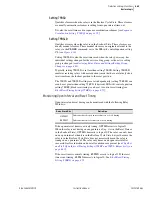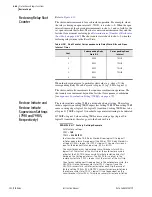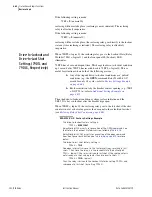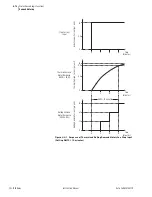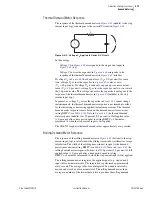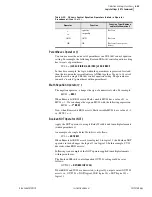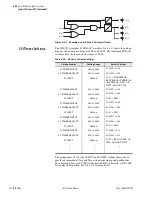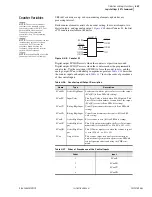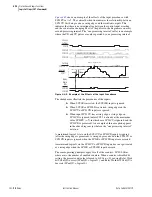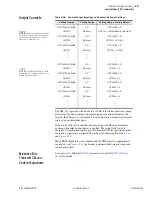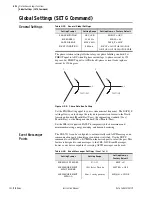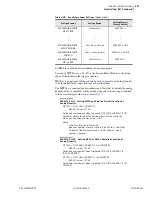
4.79
Date Code 20100129
Instruction Manual
SEL-751A Relay
Protection and Logic Functions
Demand Metering
Thermal Demand Meter Response
The response of the thermal demand meter in
(middle) to the step
current input (top) is analogous to the series RC circuit in
.
Figure 4.42
Voltage V
S
Applied to Series RC Circuit
In the analogy:
Voltage V
S
in
corresponds to the step current input in
(top).
Voltage V
C
corresponds to the
response of the thermal demand meter in
(middle).
If voltage V
S
in
has been at zero (V
S
= 0.0 per unit) for some
time, voltage V
C
across the capacitor in
is also at zero
(V
C
= 0.0 per unit). If voltage V
S
is suddenly stepped up to some constant
value (V
S
= 1.0 per unit), voltage V
C
across the capacitor starts to rise toward
the 1.0 per unit value. This voltage rise across the capacitor is analogous to the
response of the thermal demand meter in
(middle) to the step
current input (top).
In general, as voltage V
C
across the capacitor in
cannot change
instantaneously, the thermal demand meter response is not immediate either
for the increasing or decreasing applied instantaneous current. The thermal
demand meter response time is based on the demand meter time constant
setting DMTC (see
, the thermal demand
meter response (middle) is at 90 percent (0.9 per unit) of full applied value
(1.0 per unit) after a time period equal to setting DMTC = 15 minutes,
referenced to when the step current input is first applied.
The SEL-751A updates thermal demand values approximately every second.
Rolling Demand Meter Response
The response of the rolling demand meter in
(bottom) to the step
current input (top) is calculated with a sliding time-window arithmetic average
calculation. The width of the sliding time-window is equal to the demand
meter time constant setting DMTC (see
, the
rolling demand meter response (bottom) is at 100 percent (1.0 per unit) of full
applied value (1.0 per unit) after a time period equal to setting
DMTC = 15 minutes, referenced to when the step current input is first applied.
The rolling demand meter integrates the applied signal (e.g., step current)
input in five-minute intervals. The integration is performed approximately
every second. The average value for an integrated five-minute interval is
derived and stored as a five-minute total. The rolling demand meter then
averages a number of the five-minute totals to produce the rolling demand
V
S
V
C
+
+
—
—
R
C
Содержание 751A
Страница 1: ...20100129 SEL 751A Feeder Protection Relay Instruction Manual PM751A 01 NB...
Страница 6: ...This page intentionally left blank...
Страница 12: ...This page intentionally left blank...
Страница 18: ...This page intentionally left blank...
Страница 26: ...This page intentionally left blank...
Страница 92: ...This page intentionally left blank...
Страница 218: ...This page intentionally left blank...
Страница 250: ...This page intentionally left blank...
Страница 376: ...This page intentionally left blank...
Страница 392: ...This page intentionally left blank...
Страница 408: ...This page intentionally left blank...
Страница 418: ...This page intentionally left blank...
Страница 434: ...This page intentionally left blank...
Страница 462: ...This page intentionally left blank...
Страница 544: ...This page intentionally left blank...
Страница 580: ...This page intentionally left blank...
Страница 584: ...This page intentionally left blank...
Страница 632: ...This page intentionally left blank...
Страница 636: ...This page intentionally left blank...
Страница 640: ...This page intentionally left blank...

